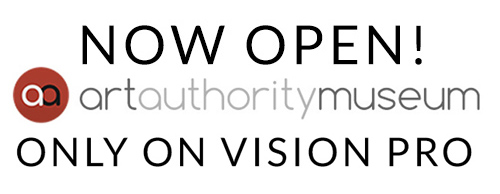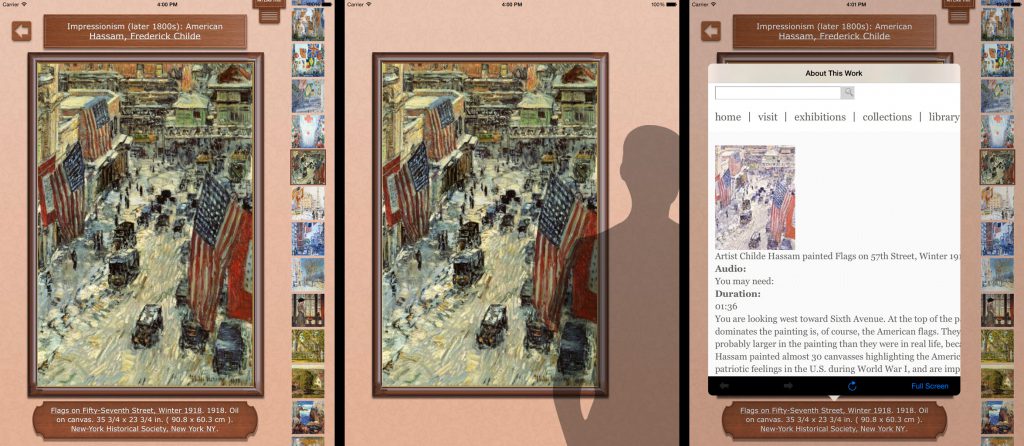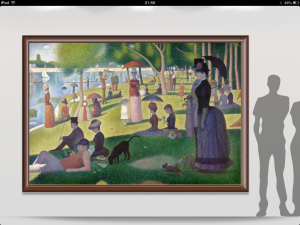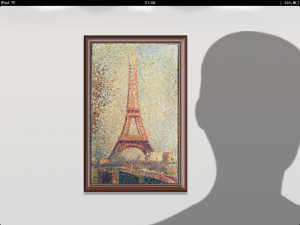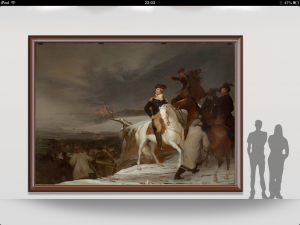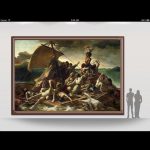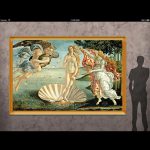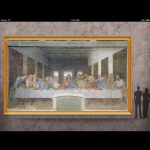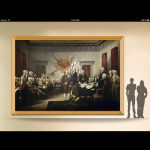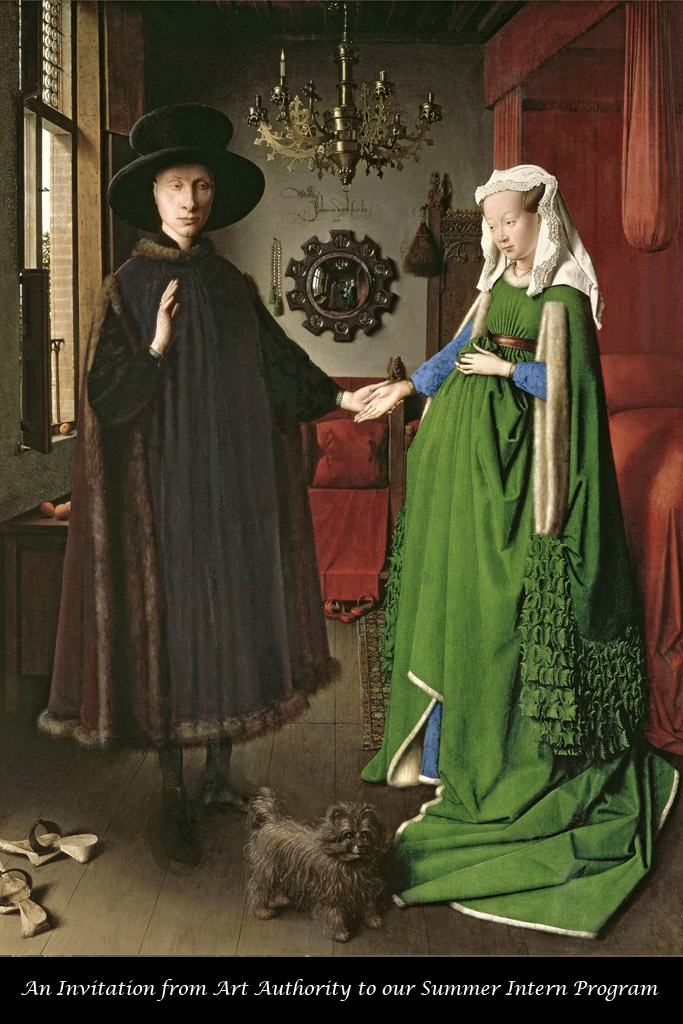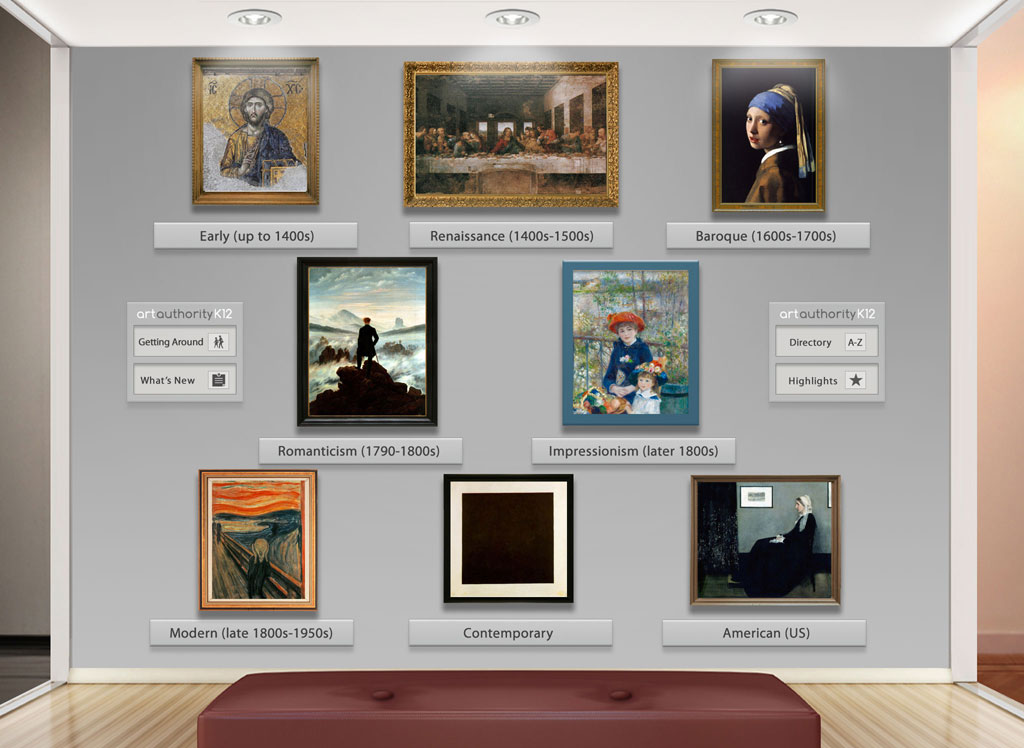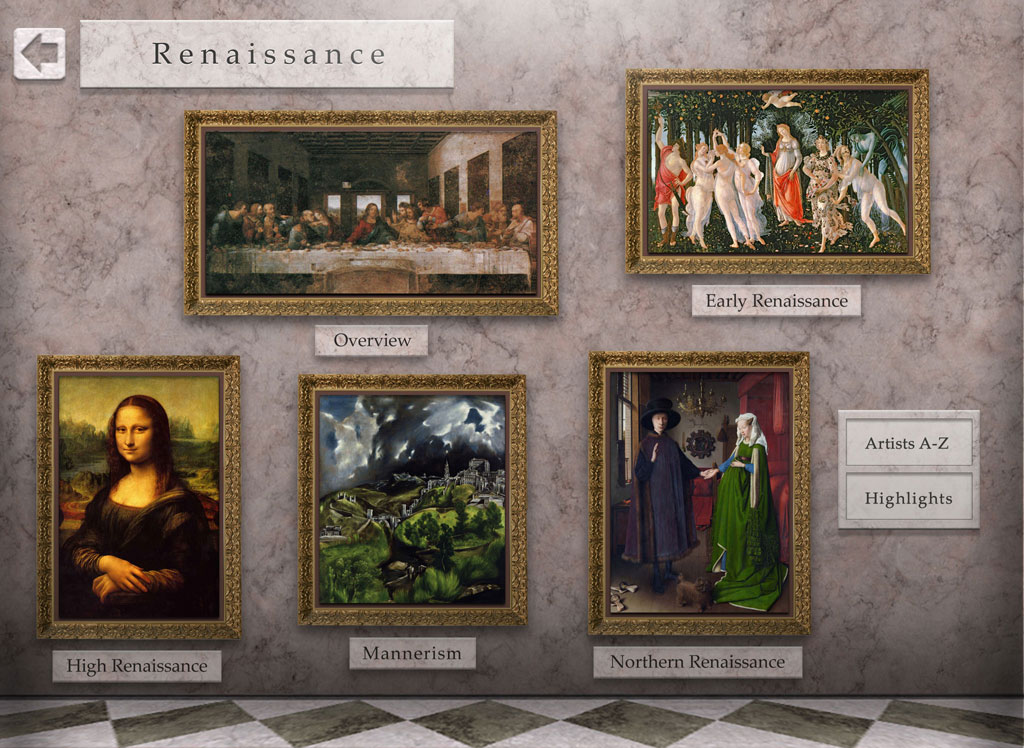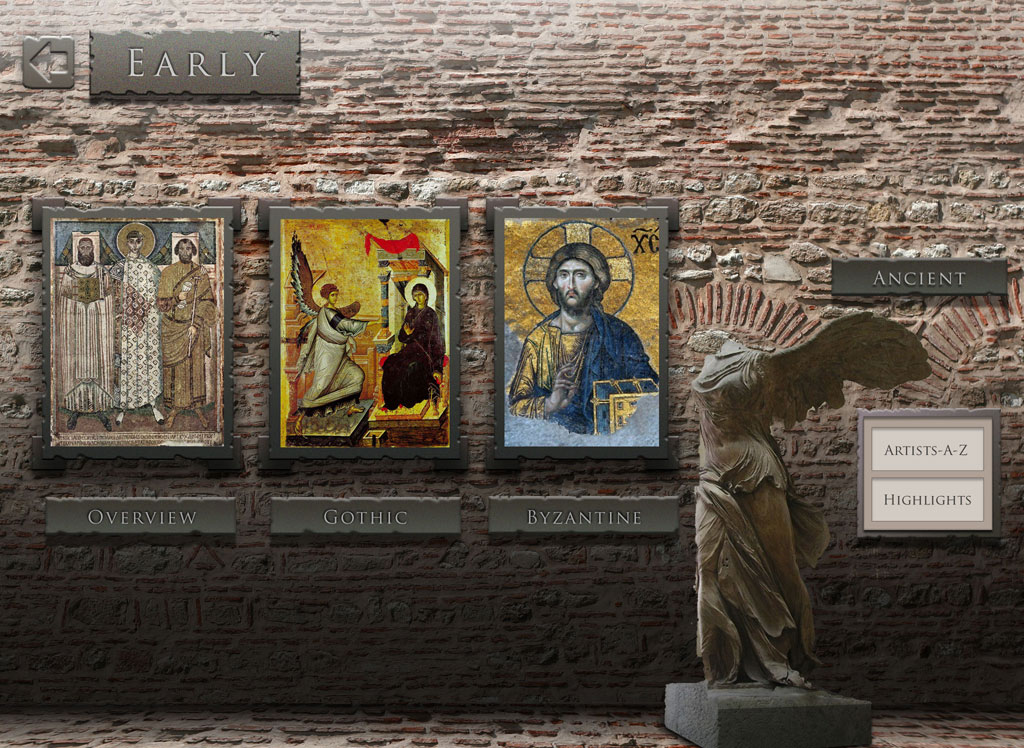Art Authority Blog
Art Authority Summer Intern Program year 4 update
The summer is drawing to a close already, with back-to-school just around the corner. So it seems like a good time for an update on the fourth year of our summer intern program.
Year 4 was a bit more sane than year 3, in which we had nearly 30 interns working on enhancing the Art Authority database. With time to look back over year 3 and plan, our intern manager (who came to us thanks to her year 2 work), was able to figure out how to best build upon the year 3 work in year 4.
Whereas years 2 and 3 were mainly about bulk additions to the database, year 4 was mainly about enhancements and fine tuning. In particular we focused on over 100 artists whose collections we felt were not quite up to the quality of the rest of the Art Authority museum. For these artists, we first made sure their major works were included in their collection where possible. We then went through and updated the “metadata” associated with their collection’s works. This metadata included not only real-world museum details like date, size, and medium, but also items unique to virtual museums, like links to articles about the works and videos.
As an example, the Art Authority database includes 487 works by the American impressionist Frederick Childe Hassam. Before the summer, entries for only 5 of those works included links to articles about the work. Now there are 98 such links. Before the summer less than one-third of the entries included the medium used; now all but 10 do. Less than 100 entries originally included the size of the works (particular meaningful through our Art Real Size feature); now all but 33 do. And again less than one-third included the location of the actual work itself, versus all but 10 now (making finding and viewing the physical work much easier, especially with the help of our Art Alert app).
The end result of year 4 will thus be a deeper, more meaningful collection, with some important new works, but also lots of important new information about and new ways to explore many of the works.
Quite a set of accomplishments. As always, however, we hope and believe that the most significant result of the program is the additional learning, experience, and exposure gained by the interns themselves, both in the traditional art field and in the various new technologies that are becoming ever more important to that field as it “goes digital.” One of the most gratifying parts of the summer intern program has been hearing back from past interns who tell us how useful it has proven in their ongoing careers.
We have always felt that one of the key goals of Art Authority is making a difference at the intersection of the technology and art worlds. We are very proud of the fact that this difference is made not only directly through our apps, but also through other related efforts such as our community site and the summer intern program.
Here’s looking forward to year 5!
Interns in real life
Art Authority’s president, Alan Oppenheimer, and his wife Priscilla just got back from a trip to the San Francisco Bay Area. Combining business with pleasure, they presented the company’s wares at the Pitch 2013 startup show at AT&T Park, met with the foremost authority on Jan Brueghel the Elder at Berkeley, met with representatives of the Fine Arts Museums of San Francisco about the National Docent Symposium they’re hosting next month (more on that later), and saw the Diebenkorn and “Impressionists on the Water” exhibits at the de Young Museum and the Legion of Honor respectively.
They also had a real life dinner with two of the participants in this year’s Summer Intern Program. We pride ourselves in the worldwide reach of our apps and our programs. The Art Authority database includes works from nearly a thousand museums and other art sites, our Art Authority apps bring that art to users around the world, our Art Alert app helps bring users around the world to that art. And our intern program this year included interns from as far east as the United Kingdom and as far west as New Zealand. We feel great about the difference we’re making worldwide. But every so often it’s really nice to just be able to sit down with people in real life and have dinner!
A sign of the Times
As you may have heard, Art Authority was featured in an article on “Applied Reading” in the New York Times Book Review last Sunday. The article begins by pointing out how “electronic textbooks” are “more effective” as learning tools than traditional paper-based solutions:
“Who wants merely… to squint at a tiny printed reproduction of a still life by Pieter Claesz — an artist who was sharing pictures of food centuries before Instagram was invented — instead of popping open a full-screen version to better study the composition?”
The article serves as a perfect example of its own point. In the print (“treeware”) version of the Times, the article includes, quite literally, “a tiny printed reproduction of a still life by Pieter Claesz” (as shown in Art Authority for iPad).
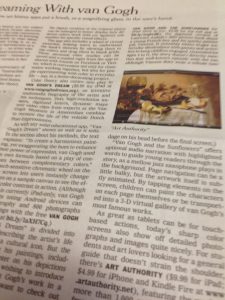
There is a fundamental defect in the printed version of the paper however, which prevents you from “popping open a full-screen version to better study the composition.” You can however do this in the online version of the article (and as part of this post as well). And of course you do it even better in the app itself.
The fact that an electronic version of a Book Review article is fundamentally better than a print version of the same article is certainly a sign of the Times. As we think is Art Authority. Thank you New York Times for making your (and our) point so well!
Size Matters
Today we’re introducing a new feature in Art Authority for iPad. We think it’s a meaningful and groundbreaking one. It’s called “Art Real Size.”
Traditionally, when works of art are reproduced in books, posters, Web sites and yes, even apps, they’re usually displayed as large as possible. Art Authority, as well as some other sites and apps, have supplemented this type of display with, for instance, a grid of small images (thumbnails) that includes similar works by the same artist or from the same period. Art Authority for iPad also displays the works framed and hanging on the walls of its professionally designed rooms, one of its most popular features.
Until now however, all these different ways of displaying the art overlooked one key fact: different works of art have different sizes. We all showed each work of art at essentially the same size as all the other works. Art Authority for iPad’s 65,000 paintings and sculptures all showed up at about 7 by 5 inches on an iPad in “full-screen view”, 5 x 4 when hanging on a wall, and less than an inch square when in a thumbnail grid. We just haven’t been showing you the whole picture!
It’s true we, and many other sites, have a caption, which might say a work is 182.9 x 243.9 cm, or 9 1/8 x 6 7/8 in. But that really doesn’t mean anything to most people looking at the image, does it? “Art Real Size” gives real meaning to the real size of a work of art.
So how does Art Real Size accomplish its magic? It would be quite a feat to display most works of art real size on a 7 x 5 inch iPad screen (where is that holographic technology from Star Wars when you really need it?). But by adapting an old trick to a new device, we can do almost as well. In this case a picture is probably worth even more than a thousand words, so here are some examples:
We’ve also created a video, worth a thousand pictures.
See how well it works! You now “get” the whole picture. The people viewing the art provide the context needed for our brain to immediately understand the real size of the works. You can see what you’ve been missing! If you had gone to the Louvre and looked at the Mona Lisa, and then walked down the hall to The Raft of the Medusa, you couldn’t have missed this HUGE difference. But if you hadn’t, with just about any other presentation, you wouldn’t have had a clue. That’s what Art Real Size is all about.
And that’s what Art Authority is all about. Making a difference. As the #1 classic art app out there, we’ve been doing that for five years now. Art Real Size is just our latest and greatest.
Art Real Size is available in Art Authority for iPad 4.8, in the App Store today. And it’s on sale for half-price to celebrate! Updates from previous versions are of course free. Check it out, and see how size matters.
Summer Intern Program Class of 2013
Now that most of them have started, we wanted to give a quick update on the current set of interns in year 3 of the Art Authority Summer Intern Program. We have over twenty art and art history majors helping us increase the quality and the quantity of entries in the Art Authority database. There are multiple representatives from Barnard, UC Berkeley, UCLA and Vassar, as well as students from Columbia, Emory, Fordham, University of San Francisco, University of Michigan, San Francisco State and Stony Brook. We also have a representative from the University of Glamorgan, Wales and one from the University of Auckland, New Zealand. All the interns are working remotely from their homes, schools and other locations, making the program even more unique.
This year’s intern program is being managed by an alumna from last year’s program. She’s helping this year’s “class” become familiar with key digital collaboration tools like Google apps, Google groups and Skype, as well as of course the Art Authority database. The interns are specializing in specific artists within the database, becoming expert in those artists, ensuring that those artists’ key works are represented, finding articles about the artists’ works, and checking, correcting, and supplementing other pieces of metadata in the database. They’re also becoming familiar with and adding to our community site.
The program is a great learning experience for all concerned. The interns learn important tools and collaboration techniques and get to understand their artists in depth. We here at Art Authority learn about “issues” with our database and community, and also what it takes to manage a diverse group of college kids working across 14 time zones. We’re also getting new and interesting points of view on various aspects of the art world. It’s going to be a fun summer!
Art Authority Summer Intern Program, year 3
Today we announced year 3 of our very successful summer intern program. As we discussed last year in this blog, the Art Authority Summer Intern Program offers art and art history majors a 21st century alternative to traditional art docent internships. By working on our cutting-edge app and database, technology-focused students gain experience with and exposure to a set of tools they’ll need as “art goes digital.”
We here at Art Authority have learned a lot over the past two years, both as far as how to run the intern program and as far as what’s needed to keep the app line on top. And it’s been working, as exemplified in Apple’s current Celebrate the Arts campaign.
Students have learned a lot too, gained credit towards their major, and even found jobs as a result of the program (one of them works here!). And of course it’s not just the Art Authority app now, but also Art Authority K-12, Art Alert and community.artauthority.net. Even an iBook. So we’re really looking forward to another great and meaningful summer for all concerned.
If you or anyone you know is curious about the program, please check out the Summer Intern Program Web site for more information and an application form. The number of spaces are limited, so anyone interested should apply as soon as possible.
New rooms in Art Authority K12
Art Authority K12 for iPad marks the first time we have “renovated” any of the Art Authority museum’s nine rooms. Removing nudity from this K-12 edition of the app involved a number of challenges, the most major of which we talked about earlier. An additional challenge, although quite an enjoyable one, was revving a few of the Art Authority K12 rooms to replace a couple of “age-inappropriate” works.
Here’s the new main room, where we replaced Botticelli’s “Birth of Venus” with Leonardo da Vinci’s “Last Supper” as the work representing the Renaissance.
In the Renaissance room itself, we also replaced Michelangelo’s “Creation of Adam” with Botticelli’s “Primavera,” which we use to represent the Early Renaissance period.
The Venus de Milo alas had to be removed as the representative “Ancient Art” work in the Early room, replaced with the equally interesting “Winged Victory.”
Finally, in the Romanticism room, “Liberty Leading the People” was replaced with “The Gleaners” as representing French Romanticism.
Even though these key works were taken off the walls of their respective Art Authority K12 rooms, they have not been removed from the museum entirely; they’re too important to the overall study of western art. As we talked about earlier, they still appear in related shows, including their rooms’ Highlights shows. Art Authority K12 just displays age-appropriate detail views, instead of the full views that K-12 teachers have told us just aren’t right for some of their students.
By request: Art Authority K12
A perfect fit for the iPad mini: Announcing… Art Authority K12
Art Authority has been very popular in the education world, from universities to high schools and even lower grades. The iPad version of the app was adopted over two years ago by Seton Hill University’s art department, mentioned by Phil Schiller in Apple’s big education event last January, and featured as part of Apple’s Back To School promotion last summer. We also just concluded a very successful summer internship program.
We have received tremendous feedback from professors and teachers, including our favorite quote that “Art Authority has really changed Art History.” We have also added a number of the features that these educators have asked for, such as simplified “Highlights” shows for each art period, and for the app overall.
We have, however, until now, struggled with the most requested feature from K-12 teachers: removing nudity from the product. These teachers know their students, and we have certainly believed them when they said that many of their students were too immature to not get distracted by the significant amount of nudity that permeates much of Western art.
We had two problems with meeting the teachers’ request however. First, Art Authority provides access to over 55,000 western painting and sculptures, so there are, quite literally, thousands of nudes. Not just classic nude portraits, but other major works like the Creation of Adam on the ceiling of the Sistine Chapel. Second, many of these works are so essential to the study of western art that we felt we just couldn’t leave them out of the product. Can you imagine Art Authority without the Venus de Milo?
Art Authority K12 for iPad, a new app, solves both problems. Using automated, computer-aided and manual methods, we meticulously went through the whole Art Authority database and flagged every work that contained nudity (or other similar objectionable material, such as rape). These works are neither downloaded nor displayed by the new app.
For each major work we eliminated, we then added, where practical, a detail view of the work that we felt would be “age appropriate” for K-12 students. So, for instance, Venus’ head from Botticelli’s Birth of Venus, and the classic fingers from Michelangelo’s Creation of Adam.
Problems solved! No worries about nudity, no loss of the most important works of western art history. Art Authority K12 for iPad is 99.9% as complete a study of the western art world as the full version. All the same features, all the same artists, and nearly all the key works. And of course it’s a perfect fit for the new, education-focused iPad mini. It took us a while, but we really think it’s been worth the effort. We hope you, and your teachers, think so too!
- « Previous
- 1
- 2

